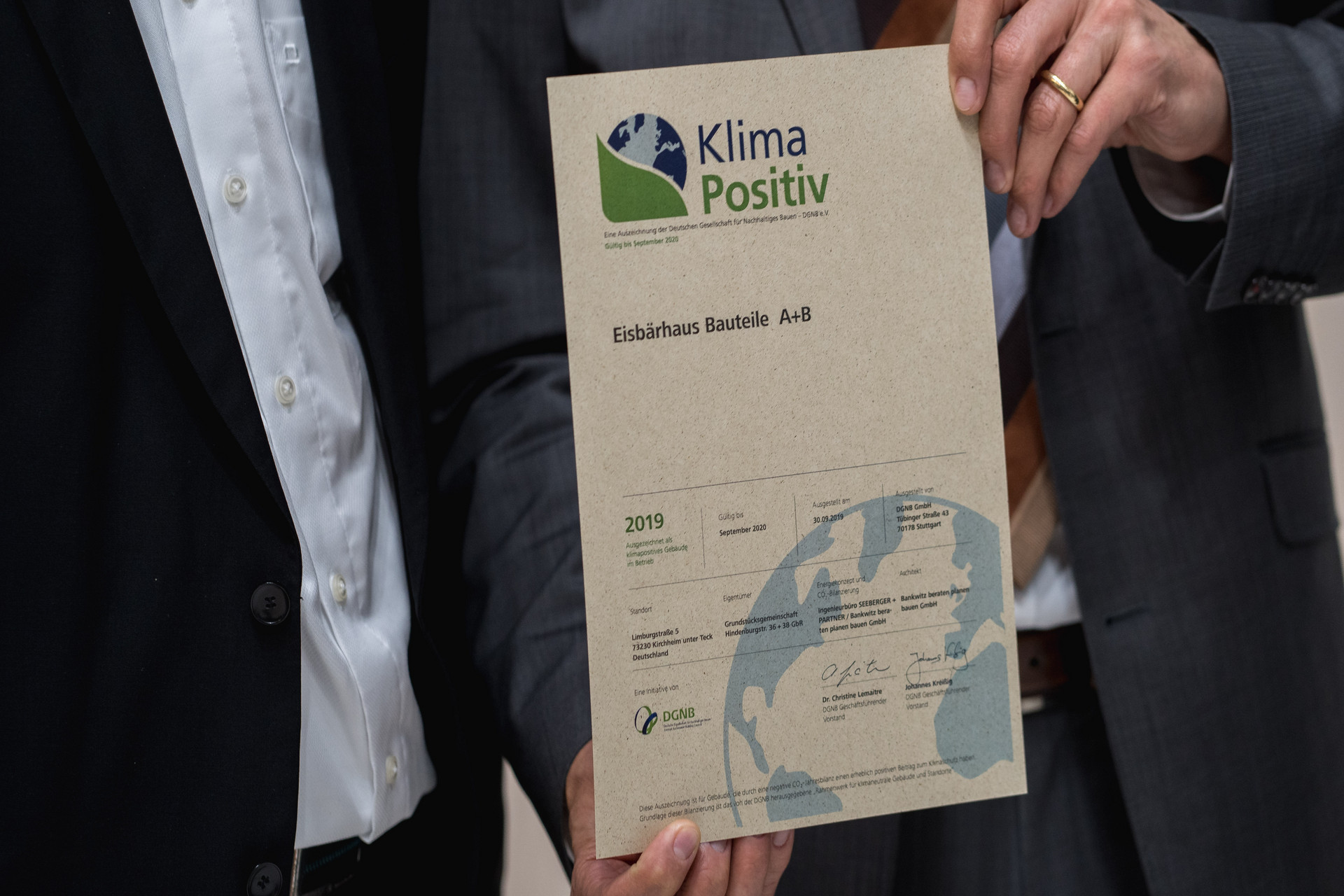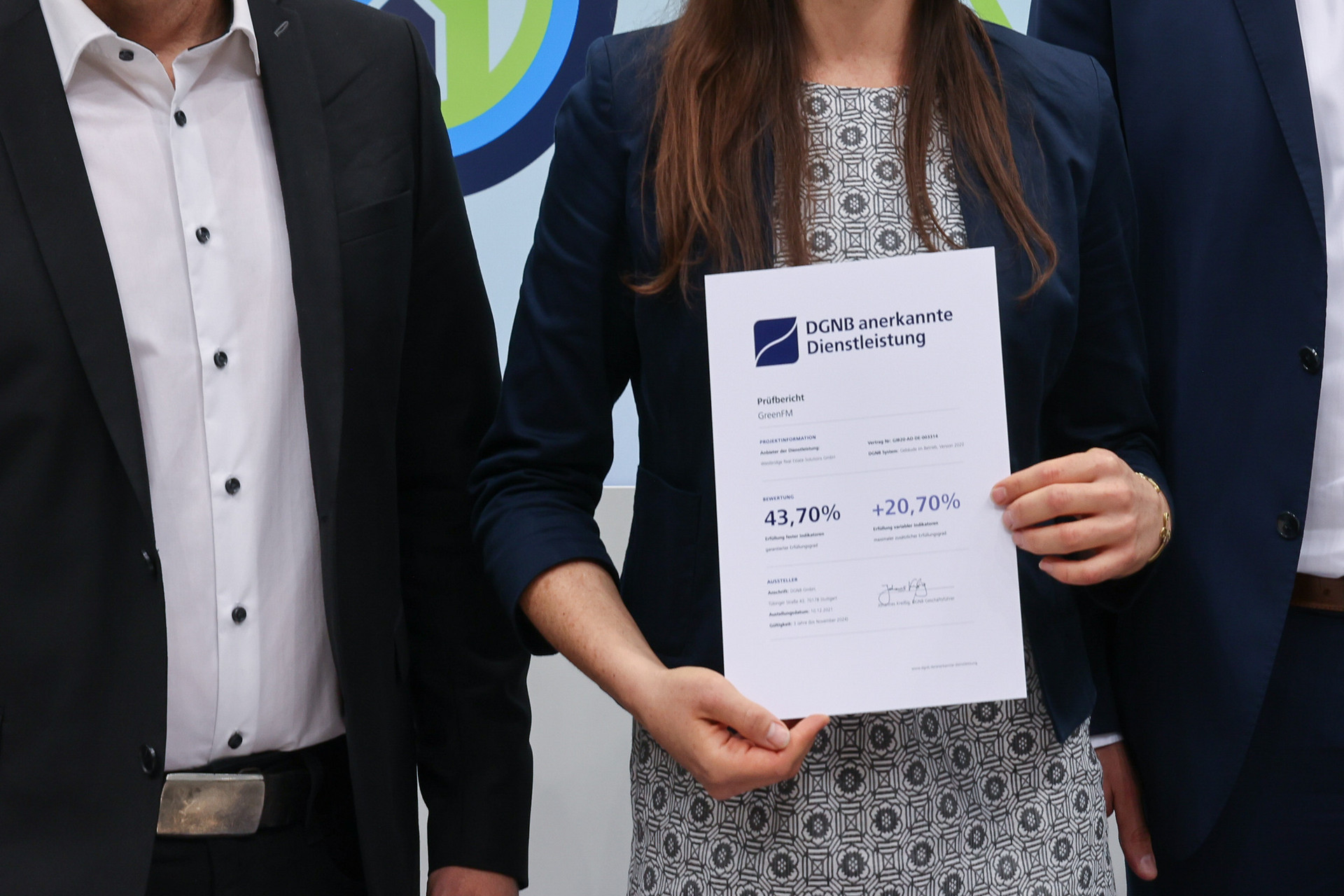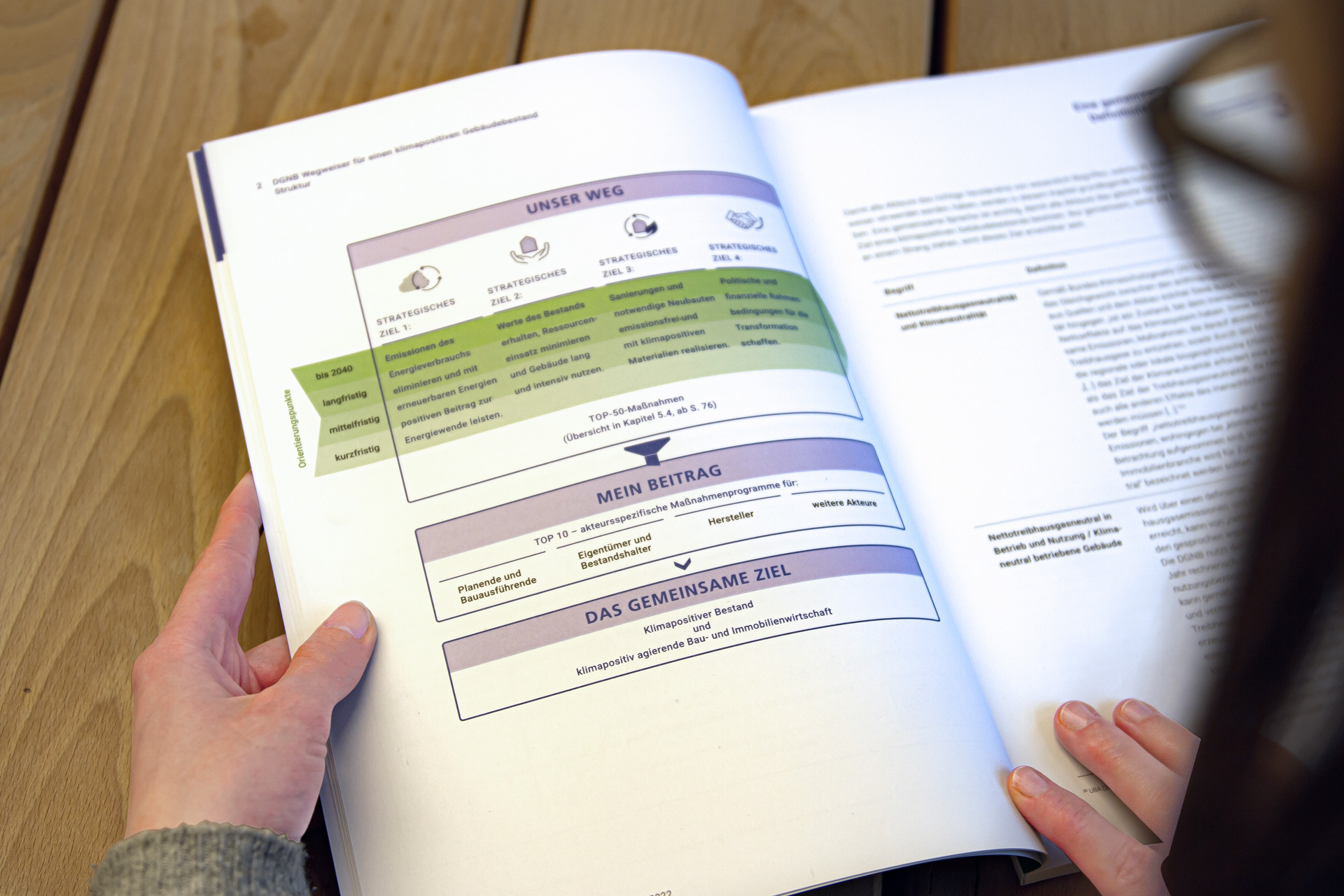All buildings must be carbon neutral by 2050. It is a challenge for the entire construction and real estate industry. In Germany buildings cause 30 percent of the greenhouse gas emissions. So building operations pose a vast potential to achieve our climate action goals. This requires a targeted, holistic, yet building-specific approach.
This is precisely where the DGNB System for Buildings In Use comes into play. It is designed as a transformation and management tool that supports building operators, owners and users in the development of a sustainable and climate action-oriented real estate strategy. By systematically considering all relevant information about the building and its characteristics, the usage situation and the real consumption data, the system helps to create transparency and identify optimisation potential. This minimises risks and increases investment security. The certification can be used for individual buildings and entire portfolios, regardless of their type of use. Buildings that are already operated carbon-neutrally are eligible for the Climate Positive award in addition to the DGNB Certificate.
Unlike the DGNB Systems for Existing Buildings and Renovation, which both focus on the building fabric, the DGNB System for Buildings In Use takes into account all building-related sustainability aspects that are relevant to operation, can be influenced and optimised.
Further development of the DGNB System for Buildings in Use
Together with its European partners, the DGNB has revised its certification system for Buildings in Use. The updated criteria were available for public comment in both German and English until 13 June 2025.
LEARN MORE
While other DGNB Systems focus on specific building or district uses, certification in the DGNB System for Buildings In Use is independent of the type of building use:
- Educational buildings
To the scheme
- Offices and administrative buildings
To the scheme
- DGNB Flex
More about DGNB Flex
- Department stores
To the scheme
- Healthcare buildings
To the scheme
- Hotels
To the scheme
- Laboratory buildings
To the scheme
- Logistics buildings
To the scheme
- Mixed use
To the scheme
- Production buildings
To the scheme
- Shopping centres
To the scheme
- Consumer markets
To the scheme
- Stations
To the scheme
- Assembly buildings
To the scheme
- Residential buildings
To the scheme
The certification is aimed at all stakeholders involved in buildings in use – at owners and operators as well as building users. The certification system is not just suitable for flagship projects. It can be used effectively for managing large portfolios, for example in the housing industry or in municipalities.
This scheme specifically addresses: building owners, real-estate managers / portfolio managers, asset managers, property managers as well as operators and facility managers. The certification, moreover, is aimed at all stakeholders involved in the thematic area of sustainable finance. The DGNB Certificate for Buildings In Use provides an independent review ("second party opinion") of the sustainability aspects of the system, in particular the measured annual contribution to the reduction of CO2 emissions ("impact assessment") at product level.
... of the system
- Transformation and management tool
- Lean system
- Systematic procedure according to the "Plan-Do-Check-Act"
- Transparency regarding building performance and business processes
- Process supported by a DGNB Auditor
- Application in the context of CSR reporting
- Use in the context of communicative measures
- Improved market opportunities
... for your property
- Carbon neutrality of your properties
- Independently tested and guaranteed quality
- Protection against loss of value and minimised risks
- Optimised material flows, waste avoidance and resource conservation
- Economically optimised processes
- Satisfied building users
- Development of a long-term real estate and portfolio strategy
Certification criteria

The system focuses on all relevant topics for sustainable building operation and long-term value retention in just nine criteria. The basic structure of the DGNB System for Buildings In Use is based on the well-known three-pillar model of sustainability and divides the essential aspects of sustainable building operations into the topics of environmental quality, economic quality as well as sociocultural and functional quality.
The criteria in the DGNB System for Buildings In Use are mainly based on a continual improvement process:
- Plan: Define specific targets for the respective parameters
- Do: Record consumption data
- Check: Analyse data and evaluate target achievement
- Act: Define measures to optimise operation
This procedure ensures continuous improvement. On the basis of this criteria structure, the DGNB not only evaluates implemented measures and degree of target achievement, but is also able to reward buildings achieving their targets.
DGNB Certificate and its validity
The DGNB System for Buildings In Use like other DGNB Certification Systems grades buildings by using perfomance indice. The total performance index is calculated from grading individual criteria. The Platinum Certificate is the most prestigious award issued by the DGNB.
Recertification is possible annually by submitting consumption data. Every three years, however, all criteria must be checked again and the required evidence submitted.
The building receives the DGNB Certificate in Bronze from a total performance index of 35 percent. The DGNB Certificate in Silver is awarded from 50 percent. The project must reach 65 percent for the DGNB Certificate in Gold and 80 percent for the DGNB Certificate in Platinum.
The certification system can be applied internationally, regardless of use, for all building types. Prior certification as a new building is not required. The only requirement is that the building has been in use for at least one year.
The certification is valid for three years. Recertification is possible annually by submitting the consumption data. Every three years, all criteria must be checked again and the necessary evidence submitted.
There are different variants for extending the validity of a DGNB Certificate:
- Option 1: Recertification according to DGNB System for Buildings In Use
- Option 2: A submission of consumption data for one year
- Option 3: One submission of consumption data for the first and second year
The goal of a multiple certification for portfolios is a simplified, faster and therefore more cost-effective certification. The process is carried out in two steps:
- In the first step, a basic certificate is created, in which aspects appliable for the entire portfolio are evaluated and documented. The submitted documents are checked for conformity. A specification is then drawn up, which defines what project-specific evidence must be submitted for a project-specific certificate.
- In the second step, a project-specific DGNB Certificate is created for each building that is operated on the basis of the portfolio with basic certification. For this purpose, all other aspects that have not yet been addressed in the basic certificate are assessed in accordance with the criteria. The submitted documents are then subjected to a full conformity check, whereby the aspects from the basic certificate do not have to be verified or checked again.
The certificate is valid for three years from the date of issue and can be re-certified via the annual submission of the consumption data. In addition, all relevant criteria are submitted every three years.
The basic certificate is valid for six years. A renewal of the basic certificate is necessary in two cases: in the event of a change in the requirements specification, as well as in the event of a change in the content of the DGNB System for Buildings In Use. The fees for the renewal of the basic certificate must be coordinated with the DGNB depending on the scope of the changes.
Project registration
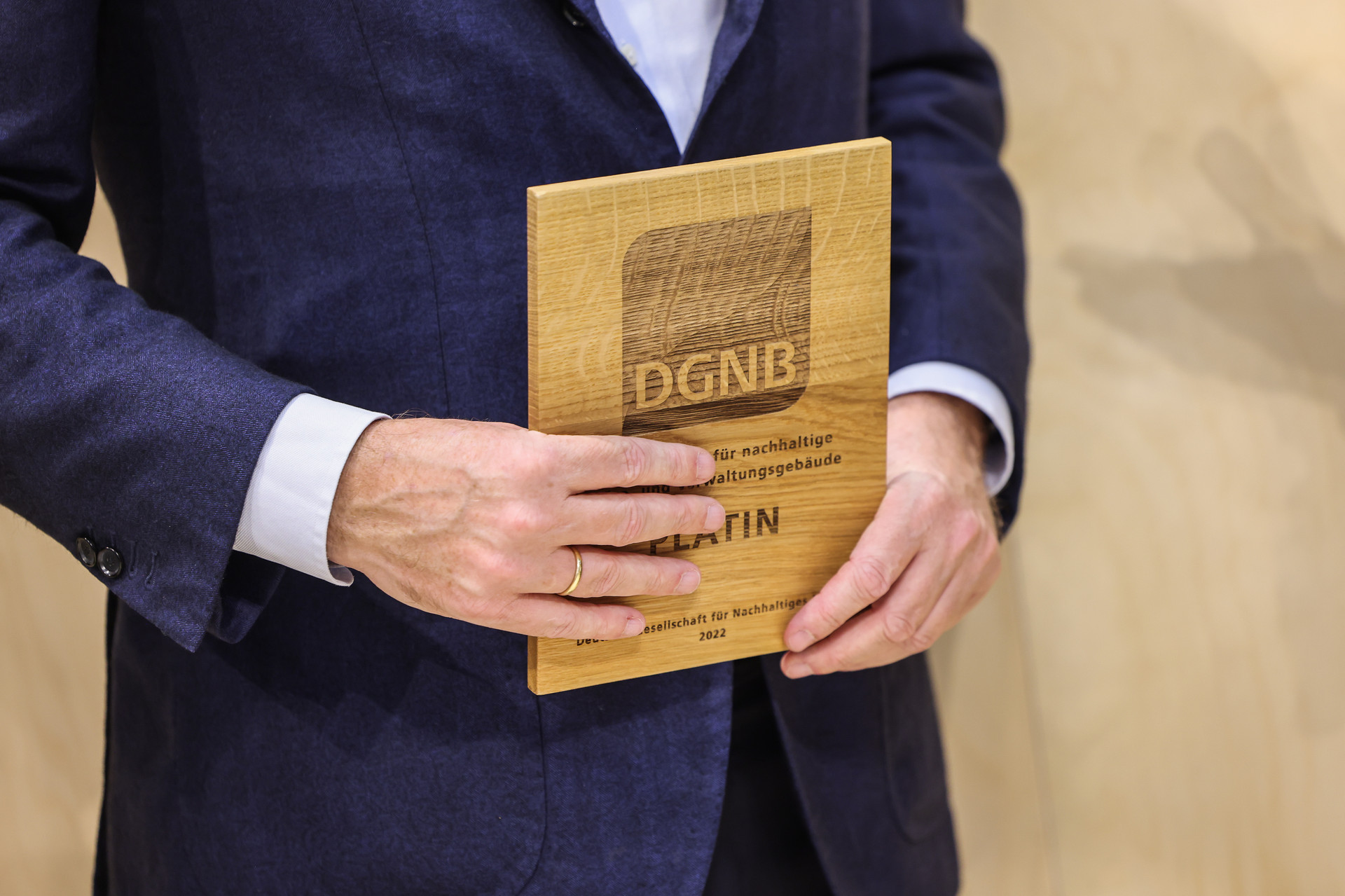
To register a project, clients must first hire a DGNB ESG-Manager. This ESG-Manager can then register the project. ESG-Managers also accompany the entire process and take over the verification and submission to the DGNB.
Projects can be registered in the current market version "Buildings In Use, Version 2020".
On 1 September 2024, the DGNB amended the scale of fees for buildings in use. A current overview can be found in the scale of fees on the DGNB website.
Selected DGNB certified projects
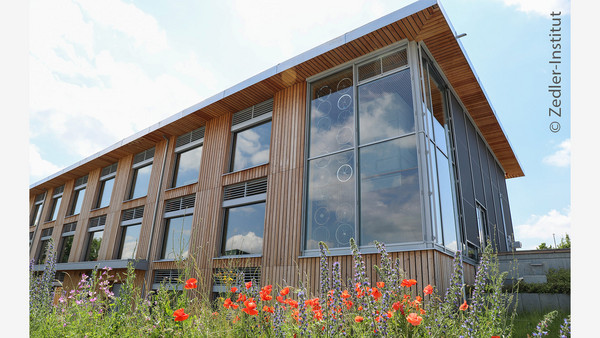
Mixed Use
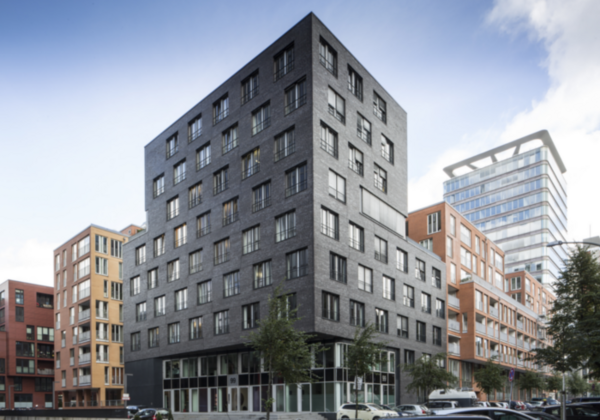
Offices and Administriative Buildings
Frequently asked questions about the DGNB System for Buildings In Use
The certificate is a management tool for the development of a sustainable, future-proof and climate protection-oriented real estate strategy and its continuous application. The focus of the assessment is on the management and performance of the operation of buildings.
In the assessment, it takes into account all building-related sustainability aspects that are relevant to operation, can be influenced and optimised. These include, for example, the goal of operating buildings in a climate-neutral manner, the preparation of a climate protection roadmap, compliance with guidelines on sustainable management and procurement, etc. This external, independent standard sets relevant targets for the environmental, economic and social aspects of building operation. In addition, relevant, risk-minimising and future-oriented improvements are initiated and implemented in the own company. Through certification, processes are established in the company that offer practical assistance for optimising performance.
Yes. DGNB multiple certification for portfolios is designed for portfolios of buildings or properties that are operated in a similar way. The aim of the DGNB portfolio certification is to simplify, speed up and thus reduce the cost of portfolio certification. The certification is processed in two steps.
- In the first step, a basic certificate is drawn up in which all aspects that can be assessed on a higher level are evaluated and supported with evidence. A complete conformity check takes place for the submitted documents. Subsequently, a requirements specification is created, which defines which project-specific verifications must be submitted for a follow-up certificate.
- In the second step, a fully-fledged, individual DGNB Certificate is created for each additional property or for each building that is operated on the basis of the basic certified portfolio. For this, all other aspects that have not yet been addressed in the basic certificate are evaluated according to the specifications. The submitted documents are then subjected to a full compliance check, whereby the aspects from the basic certificate do not have to be proven or checked again.
The fees for portfolio certification can be found here.
The certificate is valid for three years from the date of issue and, similar to the certification of a building, can be re-certified via the annual submission of consumption data. In addition, all relevant criteria are submitted every three years.
Renewal of the basic certificate is required in two cases: if the specifications are changed, and if the content of the DGNB System for Building In Use is changed by the DGNB. The fees for the renewal of the basic certificate are to be agreed with the DGNB depending on the scope of the changes.
The operation of a building is assessed in the DGNB System for Buildings In Use on the basis of nine criteria.
In the Environmental quality, the resource use of the building is examined in three criteria: In the criterion "Climate action and energy", the property is assessed on the basis of its energy monitoring and incentives are set to establish a climate protection roadmap towards climate neutrality. The criterion "Water" examines water management and in "Materials and recycling" incentives are set to increase recycling rates in the building or to optimise recycling rates. In all three criteria, the continuous improvement process is applied as a management process.
In the Economic quality criterion, the focus is on the long-term economic efficiency and value development of the property. The criterion "Operating costs" examines the distribution of financial expenses in order to simultaneously identify the most economical way to deal with future changes in the building's operation. In "Risk management and long-term asset value", the property is aligned for the future through forward-looking risk management. The criterion "Procurement and operations" calls for guidelines to promote the use of environmentally and health-friendly products and materials, thus contributing to long-term value retention.
In the Sociocultural and functional quality, the interior comfort, user satisfaction and mobility of the building are assessed. The criterion "Indoor comfort" examines the cosiness of the property, while "User satisfaction" evaluates sociocultural aspects such as user communication, family-friendliness or the quality of the stay. The criterion "Mobility" looks at infrastructural facilities of the building to promote the use of sustainable mobility.
The prices can be found in the scale of fees. On 1 September 2024, the DGNB amended its scale of fees for buildings in use.
Fees for auditor services are not included in the certification fees. The costs for auditor services are highly project-dependent. Please discuss these with your DGNB Auditor. Your auditor will also inform you of any additional costs that may be incurred.
- Focus on climate action: The current market version of the DGNB System for Buildings In Use places a stronger focus on climate action. In particular, the mandatory establishment of a climate protection roadmap contributes to this.
- Separate criteria for energy, water and material management: The topic of resource conservation in general is also being given more space and thus greater relevance. The topics of energy, water and material management are each presented as separate criteria. The targets are optimised through the application of the integrated continuous improvement process.
- Active risk management: The current market version also includes a comprehensive opportunity and risk analysis. Within this framework, the respective opportunities and risks at the building, at the site and by the user are considered. On this basis, measures can be planned that contribute to long-term value retention.
- DGNB Bonus system and innovation spaces: As with the DGNB System for New Construction, bonus points can also be achieved in the area of Agenda 2030 and the Circular Economy for the certification of building operation. In addition, innovation spaces were created to motivate those responsible to pursue the best possible solutions that make the most sense for the building.
The DGNB Certificate for Buildings In Use is recognised as a building certificate within the GRESB Real Estate Assessment and leads to a higher GRESB scoring. Further information on GRESB scoring can be found here.
Here you will find a compilation of environmental and climate risk services available online. However, if you decide to entrust your analysis to professionals, our overview of providers and product features may help you choose the right product for your project. We have compiled a guide to possible adaptation measures for you here.
Your contact
E-Mail: gib@dgnb.de


